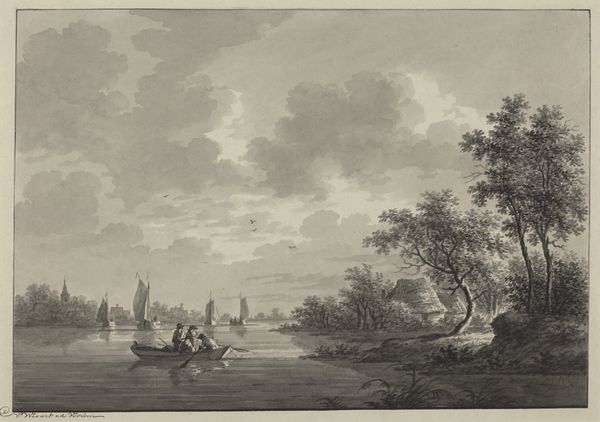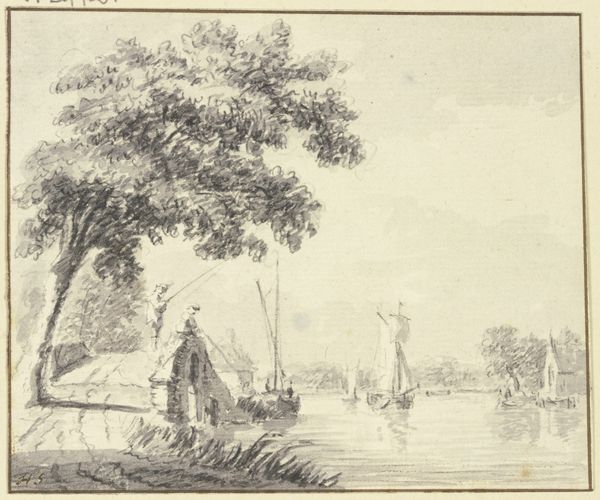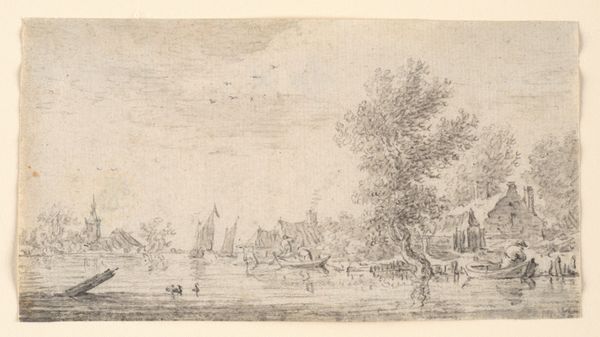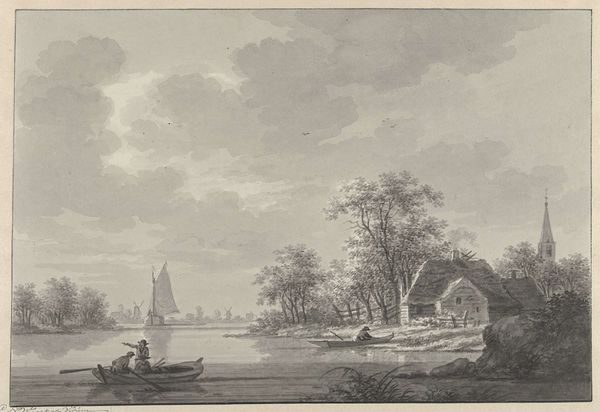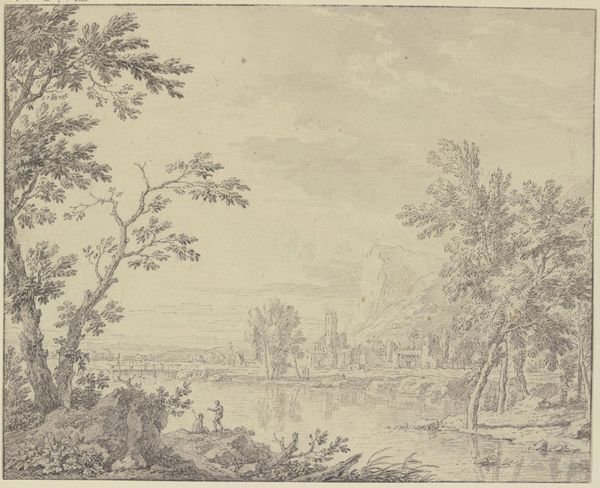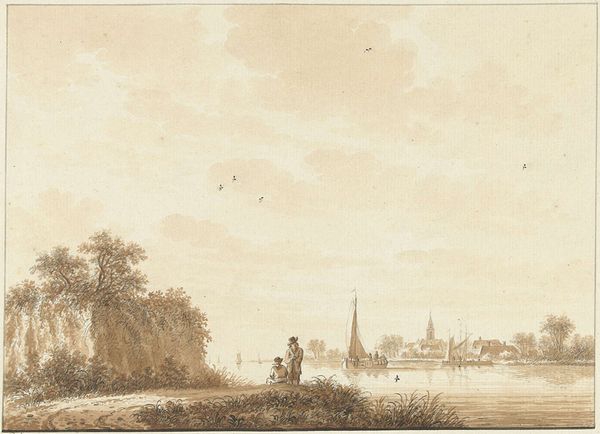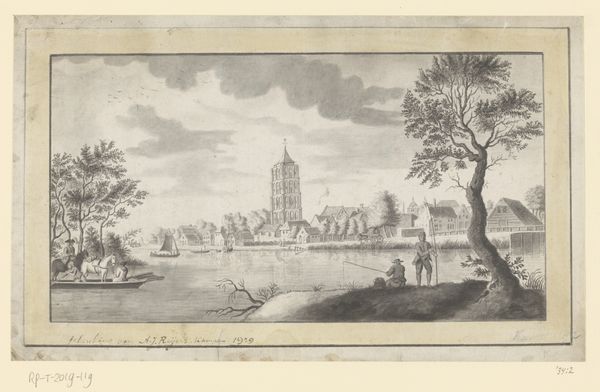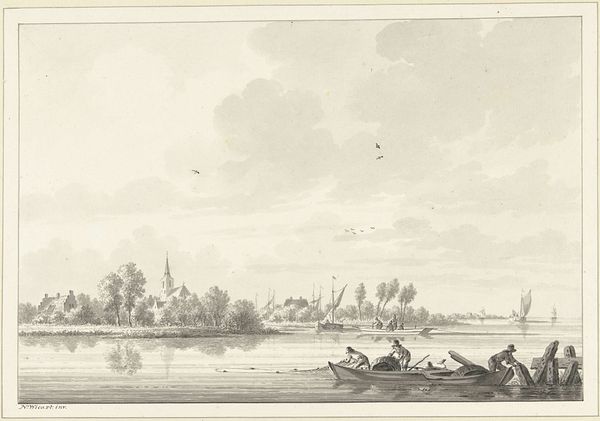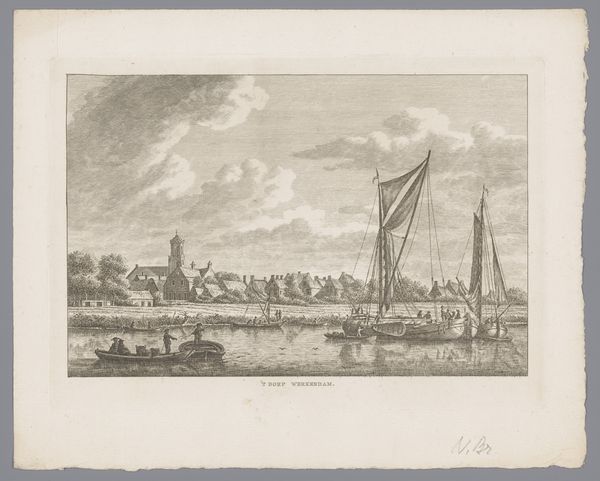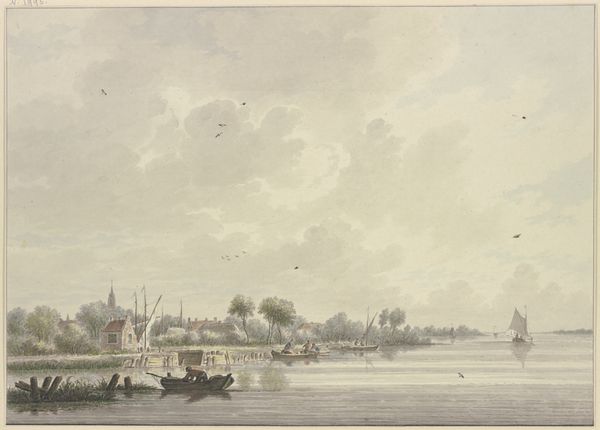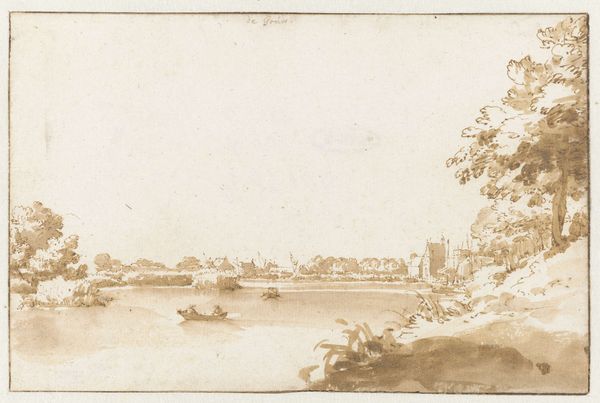
An einem von Bäumen begrenzten Fluß ein Dorf mit Turm, mehrere Segel- und Ruderboote
0:00
0:00
drawing, ink, pencil
#
pencil drawn
#
drawing
#
netherlandish
#
landscape
#
ink
#
pencil
#
15_18th-century
Copyright: Public Domain
Curator: This drawing by Jakob Versteegs captures a Dutch riverscape, the Städel Museum calls it, "An einem von Bäumen begrenzten Fluß ein Dorf mit Turm, mehrere Segel- und Ruderboote." It is rendered in pencil and ink. What is your initial take on this scene? Editor: The scene feels still, contemplative even. The soft gradations of the ink wash create an atmospheric haze. One can almost hear the quiet lapping of water against the boats. The entire village with the boats is painted with muted hues, and yet, it beckons the viewer. Curator: Exactly, notice the materiality. The artist combines the fluidity of ink with the precision of pencil. That detailed tree in the foreground is juxtaposed against the smoother washes used for the distant village. Think about the cost of materials. Ink had to be imported! It gives one pause. Editor: I find the composition fascinating. The towering tree on the left frames the scene and draws our eye toward the water. It also situates the human element, a solitary figure in a rowboat, within a larger, almost indifferent, natural world. One must ask: is this a narrative about human ingenuity in relation to forces of nature? What does this have to do with climate and social positionality at the time this was drawn? Curator: Interesting perspective. And how about the actual production of images at the time? Creating these drawings was part of the experience economy; artists would go to certain sites and create visual experiences which would become popular items among middle class audiences. I’m wondering who was this art *for* at this point in time? Who bought it and used it? Editor: That raises questions about the intended audience, yes, but I think it also prompts reflection on community and labor. What specific social function does the image of the village fulfill for the artist or the patron? One notices the labor required for drawing, etching, printing and then selling these views. There is work embedded in the image and in the community it shows. Curator: Very well said. It calls to mind the economic activities in the villages surrounding Amsterdam at the time; perhaps this scene resonated deeply because the social and economic landscapes surrounding Amsterdam had such importance during that period. Editor: Reflecting on all of this has only heightened my sense of this artwork's evocative qualities—it's a quiet statement on interconnectedness. Curator: Agreed; thinking about the social context helps highlight the means of production of both the physical drawing as well as its reflection of everyday life at the time it was made.
Comments
No comments
Be the first to comment and join the conversation on the ultimate creative platform.
